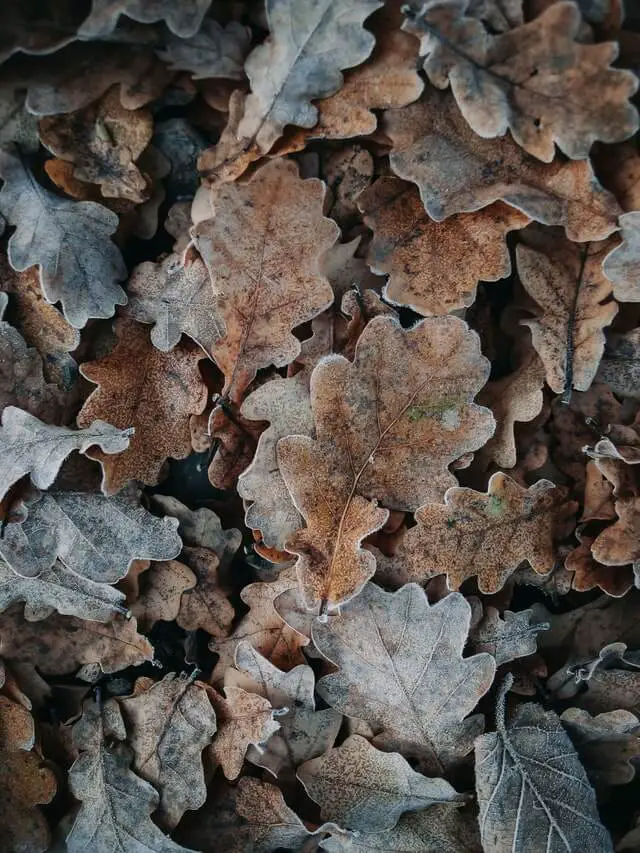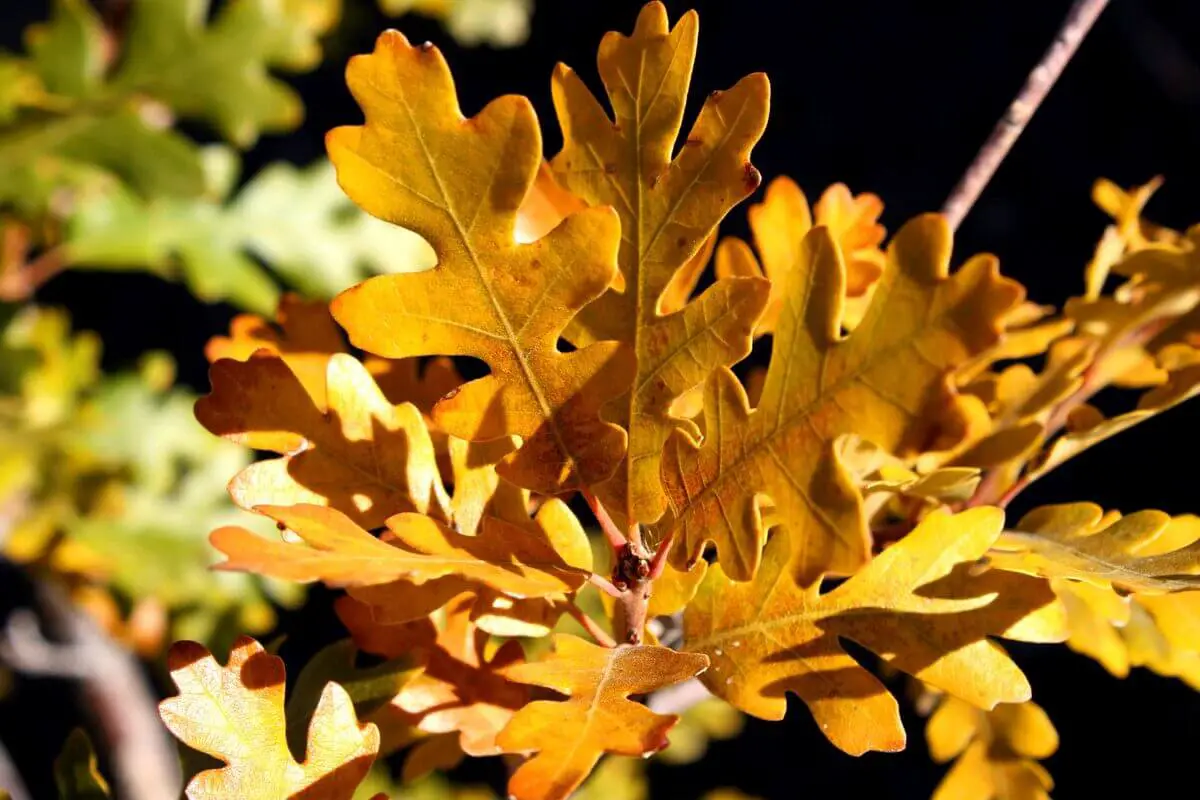Contrary to common misconceptions about their acidity and effect on soil, oak leaves are exceptional composting materials.
Table of Contents
Are Oak Leaves Acidic?
Fresh oak leaves have a pH of between 4.5 and 5.5, which is quite acidic; however, the acidity level tends to decrease as they decompose or when mixed with rainfall.
This means oak leaves will affect soil pH only slightly, if not at all.
Benefits of Composting Oak Leaves
1. They Acidify Soil
Oak leaves have a pH of 4.5 and 5.5, which is somewhat acidic. As a result, one can use them to lower soil pH.
Although acidic, oak leaves decompose slowly, and most of the acidity gets washed away, releasing valuable nutrients slower than usual.
2. Oak Leaf Mulch
Oak leaves have a wide surface area, making them perfect as mulch. They also serve as insulation to prevent water loss during high temperatures. Unfortunately, their extensive surface area is both a curse as much as it is a blessing.
Their broad leaves sometimes prevent the plant roots from absorbing water. So to counter this, you’ll want to chop the oak leaves into smaller pieces before applying them as mulch.
3. Improved Water Retention
Oak leaves improve water retention when applied as mulch immediately after watering the soil.
4. Temperature Regulation
When oak leaves decompose, they regulate soil temperature, maintaining it at a range suitable for microbes.
Moreover, oak leaves are equally helpful at regulating atmospheric carbon dioxide, thereby mitigating the effects of global warming.
How Long Do Oak Leaves Take To Compost?
Live oak leaves take a long time to break down, which makes composting somewhat challenging.
They can take up to a full year to decompose in your compost, although it depends on your method.
How To Compost Oak Leaves
Below is a step-by-step guide to composting oak leaves:
1. Decide Whether You Want to Make A Compost Pile or Use A Compost Bin
Your compost pile should measure approximately three by three feet and will sit in your garden or yard for a considerable period. Oak leaves take a long time to decompose, ranging from 6 months to a year.
Alternatively, you can always get a composting bin from your local hardware or grocery store if you decide on this route.
2. Gather the Oak Leaves
Get your rake and gather all the leaves into a big pile in your desired location.
3. Shred the Leaves into Smaller Pieces
Oak leaves have an extensive surface area, so you’ll need to shred them into smaller bits to fasten the decomposition rate.
Shredding also reduces the size of your compost. A lawnmower or leafblower should work just fine.
4. Assemble Your Compost Pile
The bottom layer should comprise shredded leaves followed by green organic material such as:
- Grass clippings
- Pre-existing compost
- Pine needles
- Prunings
Once you’re done, pour some water over the compost, then continue to stack the layers in the same order as before.
Although this is optional, you may cover your pile with mulch as the final layer.
5. Aerate the Compost
Regularly turn and mix up the layers with a rake or shovel to encourage decomposition. Remember to add water occasionally as well.
Continue this process at least once a week until you have a rich compost with a dark, earthy consistency.

How Do You Make Oak Leaves Compost Faster?
By Shredding It into Smaller Pieces
Shredding the oak leaves before composting speeds up the decomposition process by reducing the surface area.
Mixing Them with Other Types of Leaves
Mixing oak leaves with other leaf varieties lowers the acidity, making them more useful as a mulcher.
Oak leaves have a pH of between 4.5 to 5.5 and lose their acidity once they decompose or when mixed with other types of organic matter.
How To Shred Oak Leaves
1. Using A Lawnmower
A lawnmower is probably the easiest way to chop up the oak leaves.
Simply rake them into a neat pile, then run the lawnmower over them; that way, it’s easier to collect them after you’re done.
2. Using A Leaf Shredder
Some leaf blowers come with a mulching setting that shreds the leaves into tiny pieces, approximately 1/16 of their initial size.
The collection bag comes in handy by gathering them once they’re shredded.
Composting Oak Leaves With Worms
Composting with worms, also known as vermicomposting, involves using worms to turn kitchen waste and other organic material into rich soil full of microorganisms. These worms are known as Eisenia foetida, a.k.a. red wigglers.
Red wigglers are perfect for composting because they consume a lot of organic material, have a fast reproductive rate, and are hardy.
When composting oak leaves with worms, you’ll need:
- A worm bin
- Red wigglers
- Kitchen waste
- Oak leaves
Oak Leaves Composting Using Worms
- Select a location with a lot of shade and cool temperatures since worms are susceptible to light.
- Next, you’ll need bedding which should take up a half or a third of the bin, with 75% water. The bedding should be made of fallen oak leaves and brown material such as coffee grounds, old leaves, or newspapers.
- Fill half of the bin with a few handfuls of garden soil as it provides roughage for the worms.
- Gently mix up the compost to create room for the worms to burrow, then dig a hole in the middle of the bedding and place them inside.
- Cover the compost, allowing a bit of light as it encourages them to burrow.
- Check up on the compost frequently, preferably once a week. Don’t forget to feed the worms using green materials such as old tea bags, tree leaves, and fruit and vegetable scraps.
- You can harvest the compost after 3 to 6 months.

